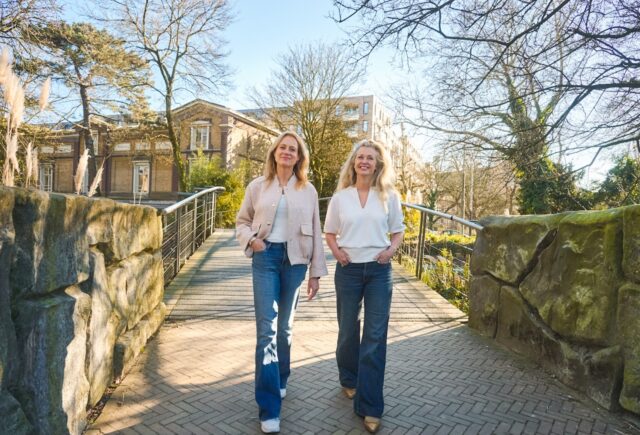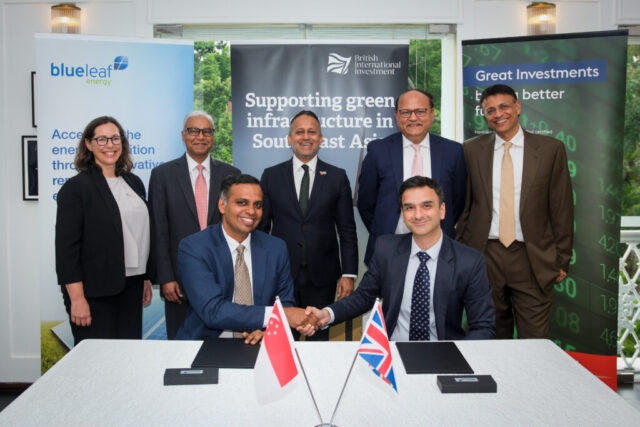Accounting for impact is notoriously difficult. Methodologies vary from one investor to the next. Impact investing, however, can only scale if they adopt harmonised standards. In a short series, we look at progress made in different sectors.

It’s the time of year that many investors publish their impact reports. For the reader, however, it’s still difficult to compare results and measure them against an accepted benchmark.
The current impact reporting landscape is complex and fragmented, resulting in a lack of clarity and missed opportunities for learning and attracting new investors.
“It is absolutely crucial that we harmonise impact measurement,” says Jorim Schraven, “so we can keep track of common progress and compare what works. The world needs delivery against the Sustainable Development Goals, and as they say: what gets measured gets done.”
Schraven is Director of the Impact and ESG department at FMO, the Dutch development bank, which plays an active role in international efforts towards the harmonising of impact measurement.
Aligning globally on one or two key standard setters will be essential to getting to true harmonisation over time, the FMO director says. That ideal still seems far removed. Looking at the present situation one sees an alphabet soup of acronyms representing many different frameworks and standards.
Moreover, they all focus on different things, varying from focussing on indicators to impact management principles and regulatory requirements. Also, adopting any of these frameworks is still voluntary.
Steps towards harmonisation
But change is in the air. In March this year, the European Union’s Sustainable Finance Disclosure Regulation(SFDR) came into force. The new EU sustainable finance strategy aims to increase transparency and integrity of green finance and thereby help avoid greenwashing.
The SFDR is designed to help institutional asset owners and retail clients understand, compare, and monitor the sustainability characteristics of investment funds by standardising sustainability disclosures.
Another important step was the recent establishment of the Joint Impact Model. The JIM estimates the impact of an investment on the economy in terms of jobs supported, value added and financed GHG emissions.
The association of European Development Finance Institutions (EDFI) launched the model in January 2021. Besides the EDFI member organisations, the African Development Bank and FinDev Canada have also started to work with it. Many more organisations have expressed interest in using the JIM in the future.
The JIM is one of the results of the EDFI Harmonisation Initiative on Impact Measurement and Responsible Financing. According to the European association, by aligning the ways in which European DFIs measure the development impact of their operations and setting standards for responsible financing, DFIs operate more efficiently, clients are better served, and institutions are able to more effectively achieve their development missions.
EDFI’s longer-term vision is of a common minimum scope for impact reporting that would apply to all impact investors, covering the key impact metrics to which private enterprises and their investors contribute.
Joint Impact Indicators
In line with this vision, EDFI joined another initiative towards impact measurement harmonisation with a much wider scope than only development banks: the Joint Impact Indicators. The JII measures impact at the client level, through various indicators such as direct jobs created, GHG emissions, and the number of women in senior leadership.
The JII was launched in Match this year by the International Finance Corporation, the Global Impacting Investing Network (GIIN) and several other leading impact investors like Axa Investment Managers, Blue Orchard and Calvert Impact Capital (for a complete list, see this see this pdf).
Over 35 organisations and investors have already committed to using the newly developed indicators and to collaborating on the identification of a core set of impact metrics. Their common goal is to define a minimum scope for impact measurement and reporting for all impact investors.
The JII integrates two already widely known impact indicators, the Harmonized Indicators for Private Sector Operations (HIPSO), in which many development finance institutions collaborate, and the IRIS Catalogue of Metrics.
The IRIS metrics, developed several years ago by the GIIN, is probably the best-known model so far, but still not widely used by impact investors. Two years ago the GIIN reintroduced its standards with IRIS+, aiming to take another step towards greater data transparency, improved comparability and ease of use.
According to Hetal Sheth, co-founder of SoPact, an impact measurement & management software social enterprise, these new metrics do a better job of aligning with the SDGs and bringing multiple standards together, but it’s still not enough.
“Practitioners still need practical tools to take advantage of it,” she wrote in an article two years ago, “complementing what IRIS+ provides so that their impact journeys can progress from theory to reality, no matter the size of the program or organisation.” The Joint Impact Indicators are another step to reach that goal.
The challenge of attribution
FMO’s Jorim Schraven says he is “very excited about working with these initiatives, and FMO reports in alignment with them.” The Dutch development bank has been a driving force in founding and financing the JIM. It developed its own impact model to measure the indirect effect of investments already in 2014.
The model, developed by consultancy firm Steward Redqueen, measures indirect jobs supported through FMO’s investments as well as (avoided) greenhouse gas emissions.
Last year FMO reported over 400,000 jobs supported, over 1.5 million tonnes of CO2 avoided, and portfolio emissions just shy of 3 million tonnes of CO2. “It would have been impossible to give this kind of transparency and accountability in a comparable way without the recent initiatives,” Schraven says.
However, it remains difficult to value these results, due to the lack of international benchmarks. If the JIM approach becomes a success, it will be possible to better compare the results of the different development finance institutions and make them more accountable to their shareholders.
While important progress towards further harmonization of impact measurement has been made, there’s still a long way to go. There are still several challenging conceptual nuts to crack, the FMO-director says. ‘Attribution’ is one example.
“In the financial world, it is already complicated enough to attribute profit to an organisation, and profit still lies largely within the organisation’s own control. But how do you allocate impact that was achieved outside the organisation’s scope?,” Schraven says.
“If one impact investor financed a company with a €10mn loan, another investor did so with €5mn in equity, and a third provided a €1mn capacity development grant that helped the company improve its business, how do you attribute or allocate the newly created jobs to each? And how does this relate to negative impacts, such as carbon emissions? Does attribution then also mean responsibility? These are complicated challenges, which will take time to resolve fully.”





